If you visit the castle of Rambouillet, in France, you must absolutely take the opportunity to discover the Queen’s Dairy. This 18th century masterpiece built at the request of Louis XVI for his wife, Queen Marie-Antoinette is a jewel that will not fail to amaze you!
What is the history of the Queen’s Dairy? What does it look like? And how to visit it? Discover this fascinating monument in this article!
Summary
A gift from Louis XVI to Marie-Antoinette
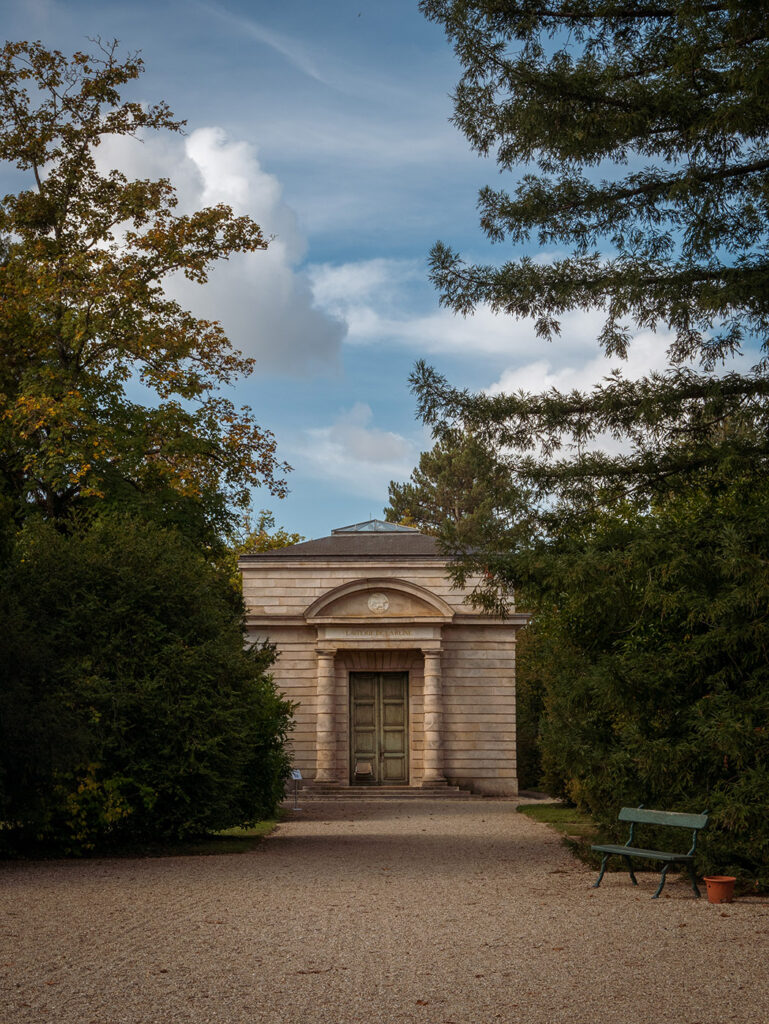
In 1783, King Louis XVI fell under the spell of the Domaine de Rambouillet. The latter has indeed many assets: 50 km from Paris it is a place neither too close nor too far from the capital where the king can find peace without being held too far from business. Moreover, the vast forest with its abundance of game offers a superb hunting ground.
But Marie-Antoinette did not see Rambouillet in the same way. For her, who is so fond of Trianon, it is a boring and “gothic” place!
In the hope of seducing the Queen and making her come to Rambouillet more often, Louis XVI had a luxurious dairy built in the greatest secrecy, which was unveiled to Marie-Antoinette and the court in 1787. It is said that a palisade covered with foliage masked the dairy, which was unveiled to the queen in a theatrical manner.


What is a dairy?
At the end of the 18th century, the ideas of Rousseau and Diderot gave rise to a movement to return to nature. One wishes to get closer to the agricultural world, It was in this context that Marie-Antoinette had the Queen’s Hamlet built in Versailles.
In the aristocracy, people enjoyed creating dairies for pleasure, as evidenced by Quatremère de Quincy’s Dictionnaire historique d’architecture in 1832:
“In the country houses of rich people who enjoy rustic occupations, the dairy is made a pleasure room (…) where snacks are served; some fountain (…) is arranged there, which in the heat adds to the freshness of the place.”
In Rambouillet, the dairy is therefore not a dairy of utility intended for the collection of milk, but a dairy of pleasure where one tastes dairy products (fresh milk, cheeses, cream, butter…).
Visit of the Queen’s dairy
Built in 1786 and 1787, the dairy is a masterpiece imagined by the most talented artists of the time. The entire project was directed by Hubert Robert, accompanied by the architect Jacques-Jean Thévenin, the sculptor Pierre Julien, the painter Piat-Joseph Sauvage and the cabinetmaker George Jacob.
The general enclosure, seen from the sky, has the shape of a hot air balloon, a nod to the first flight that took place a few years earlier, in 1783.
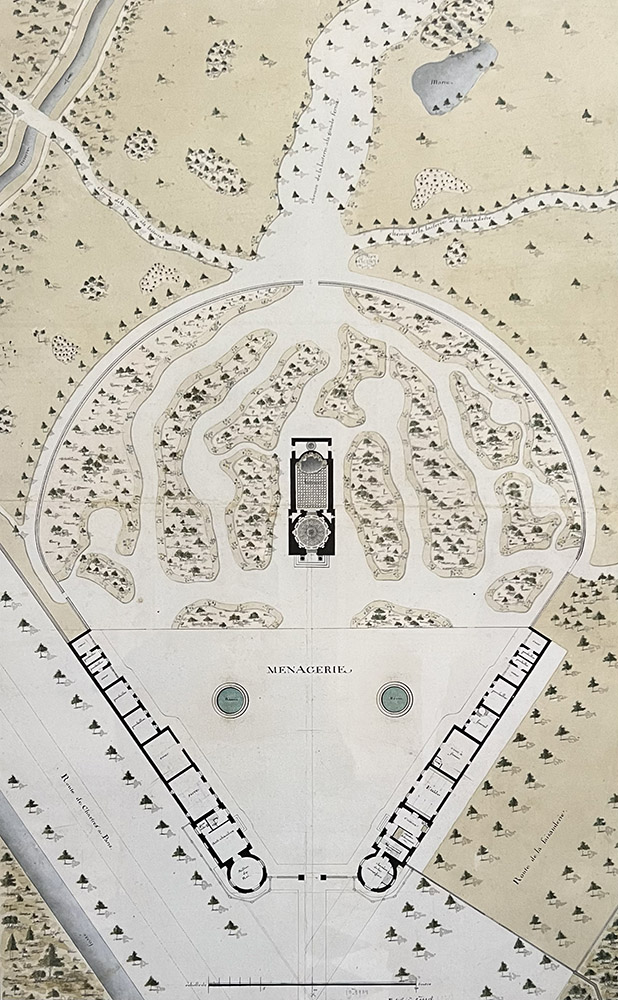
The façade of the central pavilion resembles an ancient temple. From the outside, apart from the inscription on the pediment, only a medallion representing a cow suckling her calf gives a hint of the building’s function.
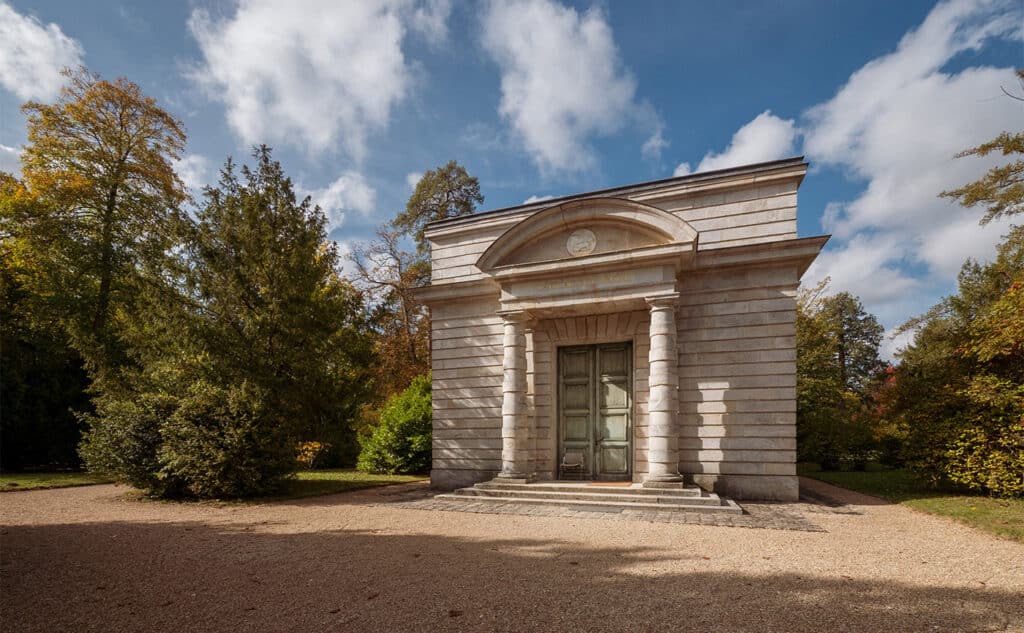
The interior is divided into two parts: a tasting room and a freshness room.

The tasting room
This first room, in the shape of a rotunda with a coffered ceiling, was used, as its name indicates, to taste dairy products.
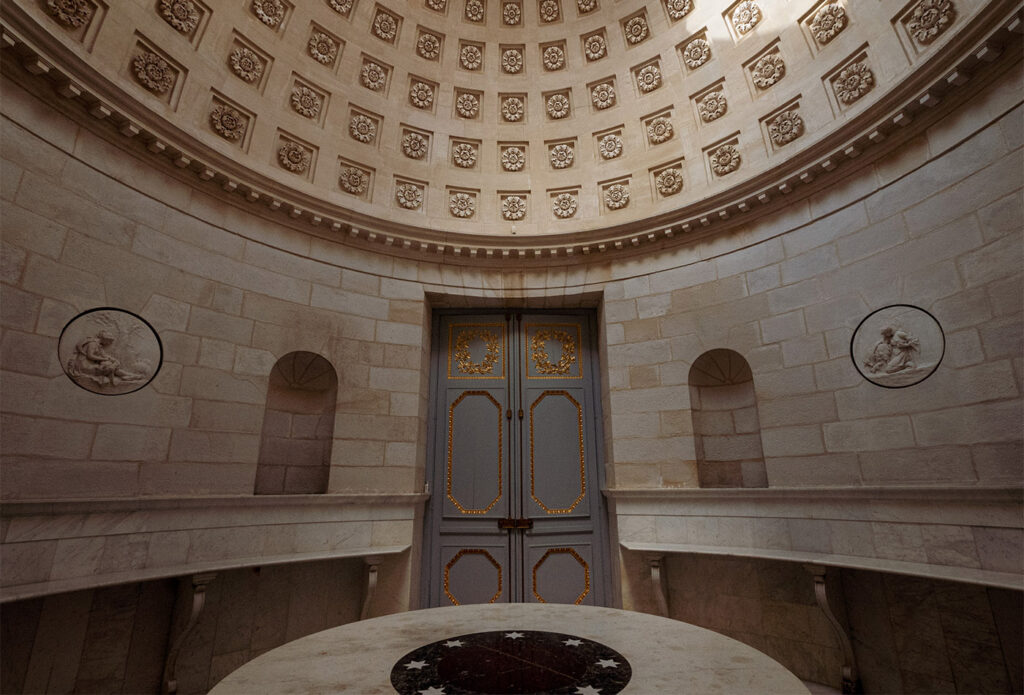

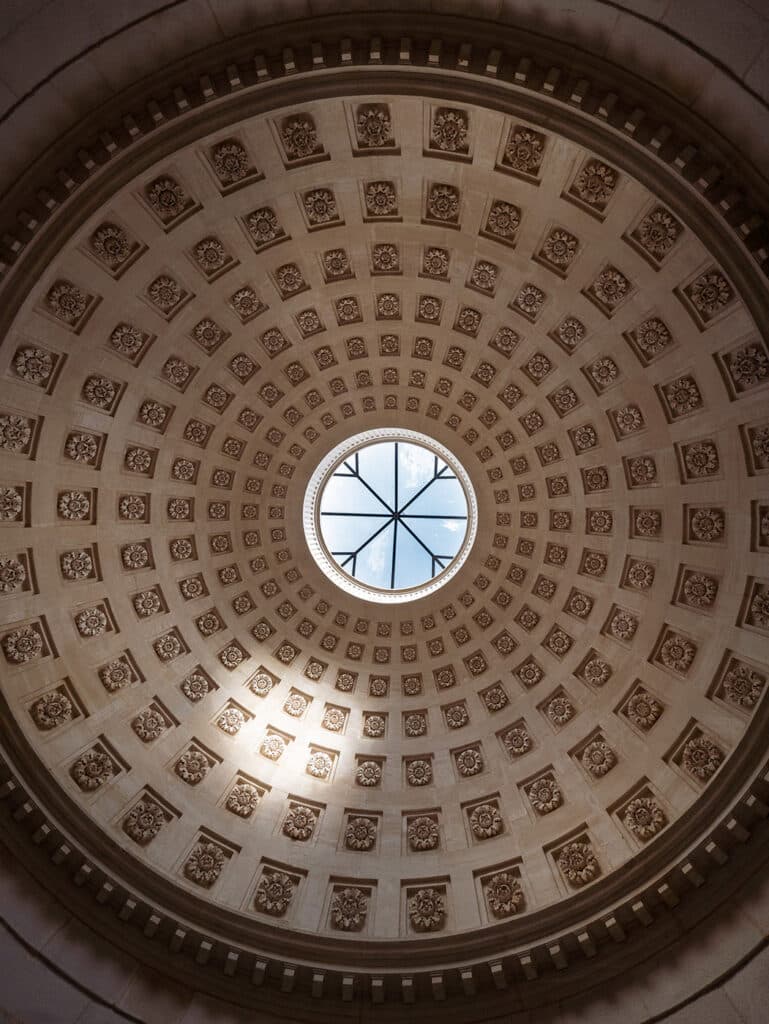
The current appearance is not quite the original one, but a state restored in 1807 at the request of Napoleon. The floor and the table are from this period, originally everything was white, in harmony with the milk.
All around the room, medallions are in connection with the peasant world, evoking the shearing of sheep, milking the cow …
A tableware dedicated to the dairy
The Sèvres factory made a service of 108 pieces specially dedicated to the Dairy with cups, tumblers and saucers decorated with a cow that you can admire today at the Museum of Ceramics, in Sèvres. The most original piece was the “bol-sein”, a cup in the shape of a breast supported by a tripod with ram heads. The bol-sein is so famous that it continues to be produced today.
ALSO READ: The Sèvres Manufactory, 280 years and an intact know-how

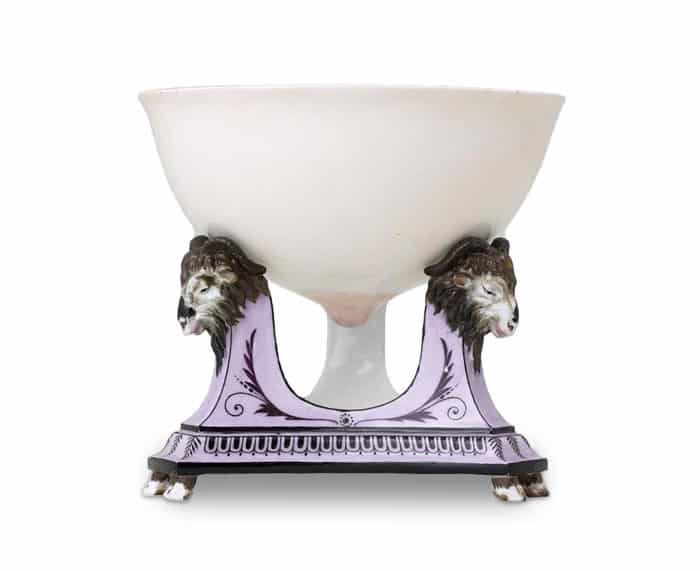
The freshness room
After passing through a doorway, one enters the second room, known as the “freshness room”, which is incredibly well staged. At the end of this room, monumental rocks form a grotto where Pierre Julien’s sculpture “Amalthée et la chèvre de Jupiter” is installed.
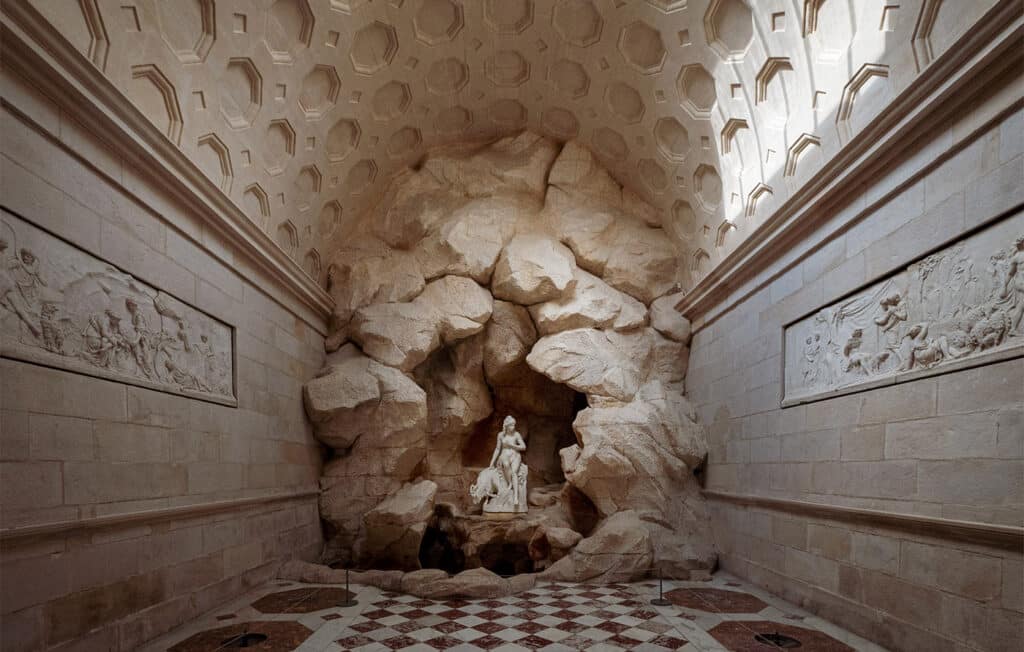

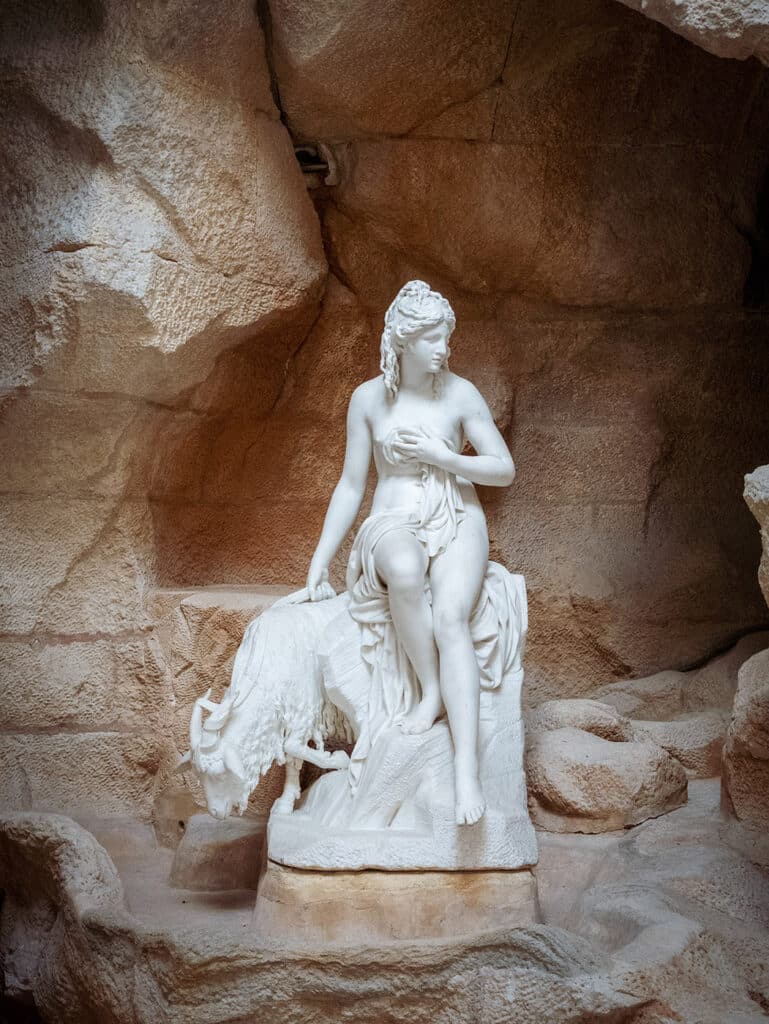
In Marie-Antoinette’s time, water jets were used all around the room and in the grotto, giving the room a steamy atmosphere and keeping the milk cool.
The room is surrounded by bas-reliefs of mythological scenes: Apollo guarding the flocks of Admetus or Jupiter as a child among the Corybantes.
To know more about the Queen’s Dairy
Find an overview of the Dairy in this video:
How to visit the Queen’s Dairy? Useful information
The Queen’s Dairy is part of the Domaine national de Rambouillet. You can visit it alone or with the castle.
It takes about 50 minutes by train to get there from the Montparnasse station in Paris (35 minutes by train + 15 minutes on foot).
Adress:
National Estate of Rambouillet
78120 Rambouillet
France
Opening hours:
Schedules vary according to the season, consult the official website
Website:
https://www.chateau-rambouillet.fr/en/
Price:
Visit of the Queen’s Dairy only : €6.
Visit of the Dairy and the castle: €7,5.
Free for children under 26 years old





No Comments
Leave a comment Cancel